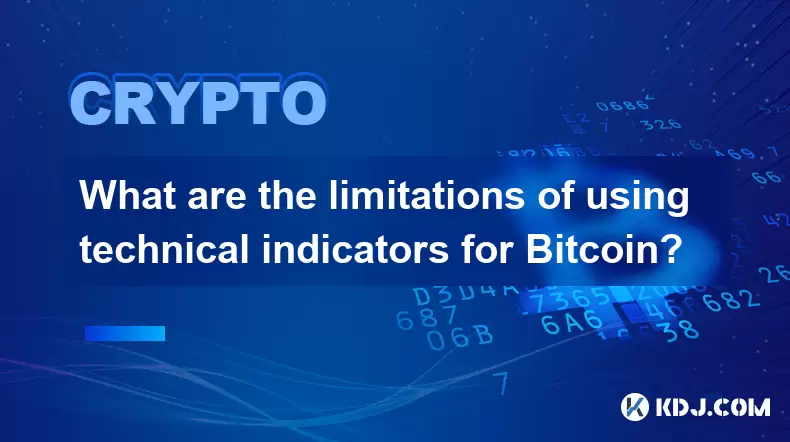-
 Bitcoin
Bitcoin $108,250.0992
0.11% -
 Ethereum
Ethereum $2,515.9404
0.03% -
 Tether USDt
Tether USDt $1.0003
0.00% -
 XRP
XRP $2.2166
-0.19% -
 BNB
BNB $656.5904
0.29% -
 Solana
Solana $147.4122
-0.58% -
 USDC
USDC $1.0000
-0.01% -
 TRON
TRON $0.2830
0.06% -
 Dogecoin
Dogecoin $0.1641
0.27% -
 Cardano
Cardano $0.5739
-0.19% -
 Hyperliquid
Hyperliquid $39.1463
-0.11% -
 Sui
Sui $2.8882
-0.02% -
 Bitcoin Cash
Bitcoin Cash $487.6428
0.31% -
 Chainlink
Chainlink $13.2097
0.07% -
 UNUS SED LEO
UNUS SED LEO $9.0308
0.10% -
 Avalanche
Avalanche $17.8608
0.13% -
 Stellar
Stellar $0.2379
-0.06% -
 Toncoin
Toncoin $2.7400
-0.39% -
 Shiba Inu
Shiba Inu $0.0...01144
-0.36% -
 Litecoin
Litecoin $87.5467
0.66% -
 Hedera
Hedera $0.1538
0.22% -
 Monero
Monero $315.5479
0.36% -
 Dai
Dai $1.0000
0.00% -
 Polkadot
Polkadot $3.3523
-0.71% -
 Ethena USDe
Ethena USDe $1.0003
0.01% -
 Bitget Token
Bitget Token $4.3960
-1.03% -
 Uniswap
Uniswap $7.2663
4.19% -
 Aave
Aave $272.8619
2.04% -
 Pepe
Pepe $0.0...09676
-0.18% -
 Pi
Pi $0.4586
-2.87%
How does Bitcoin work? What role does its underlying technology, blockchain, play?
Bitcoin transactions are secured by blockchain technology, which miners validate through proof-of-work, ensuring a decentralized and immutable ledger.
Apr 27, 2025 at 05:49 pm

Bitcoin, the first and most well-known cryptocurrency, operates on a decentralized network that allows for peer-to-peer transactions without the need for intermediaries like banks. At the heart of Bitcoin's functionality is its underlying technology, the blockchain, which plays a crucial role in ensuring the security and integrity of the network. Let's dive into how Bitcoin works and the pivotal role blockchain plays in its operation.
The Basics of Bitcoin Transactions
Bitcoin transactions are the fundamental operations that allow users to send and receive the digital currency. When a user wants to send Bitcoin to another user, they create a transaction and broadcast it to the Bitcoin network. This transaction includes the sender's and recipient's public keys, the amount of Bitcoin being transferred, and a digital signature created using the sender's private key.
The process of sending Bitcoin involves several steps:
- Initiate the Transaction: The sender uses their Bitcoin wallet to create a transaction, specifying the recipient's address and the amount to be sent.
- Sign the Transaction: The sender signs the transaction with their private key to prove ownership of the Bitcoin being sent.
- Broadcast the Transaction: The signed transaction is broadcast to the Bitcoin network, where it is verified by nodes and miners.
The Role of Miners in Bitcoin
Miners are essential to the Bitcoin network as they validate transactions and add them to the blockchain. Miners use powerful computers to solve complex mathematical puzzles, a process known as proof-of-work. The first miner to solve the puzzle gets to add a new block of transactions to the blockchain and is rewarded with newly minted Bitcoin and transaction fees.
The mining process involves:
- Collecting Transactions: Miners gather unconfirmed transactions from the Bitcoin network into a block.
- Solving the Puzzle: Miners compete to find a hash that meets the network's difficulty criteria, which requires significant computational power.
- Adding to the Blockchain: Once a miner solves the puzzle, they broadcast the new block to the network, where it is verified and added to the blockchain.
The Importance of Blockchain in Bitcoin
Blockchain is a distributed ledger that records all Bitcoin transactions across a network of computers. Each block in the blockchain contains a list of transactions, a timestamp, and a reference to the previous block, forming a chain of blocks. This structure ensures the integrity and immutability of the transaction history.
Blockchain's role in Bitcoin includes:
- Transaction Verification: Each transaction is verified by multiple nodes on the network, ensuring that only valid transactions are added to the blockchain.
- Immutable Record: Once a block is added to the blockchain, it cannot be altered, providing a tamper-proof record of all transactions.
- Decentralization: The blockchain is maintained by a decentralized network of nodes, reducing the risk of a single point of failure and ensuring that no single entity controls the network.
Bitcoin Wallets and Private Keys
Bitcoin wallets are software programs that store the private and public keys necessary to manage Bitcoin transactions. The private key is crucial as it allows the owner to sign transactions and prove ownership of the Bitcoin. The public key, derived from the private key, is used to receive Bitcoin.
Managing a Bitcoin wallet involves:
- Creating a Wallet: Users can create a Bitcoin wallet using various software options, which generate a unique pair of private and public keys.
- Storing the Private Key: It's essential to keep the private key secure, as anyone with access to it can control the associated Bitcoin.
- Receiving and Sending Bitcoin: Users can use their public key to receive Bitcoin and their private key to sign transactions and send Bitcoin to others.
Security and Anonymity in Bitcoin
Bitcoin offers a level of security and anonymity that is different from traditional financial systems. While transactions are recorded on the public blockchain, the identities of the users are represented by pseudonymous addresses, providing a degree of anonymity.
Key aspects of Bitcoin's security and anonymity include:
- Cryptographic Security: Bitcoin uses advanced cryptographic techniques to secure transactions and control the creation of new units.
- Pseudonymity: Users are identified by their public keys rather than personal information, offering a level of privacy.
- Network Security: The decentralized nature of the Bitcoin network and the consensus mechanism of blockchain make it highly resistant to attacks and fraud.
The Consensus Mechanism of Bitcoin
The consensus mechanism is a critical component of the Bitcoin network, ensuring that all participants agree on the state of the blockchain. Bitcoin uses a consensus mechanism known as proof-of-work, where miners compete to solve mathematical puzzles to validate transactions and add them to the blockchain.
The consensus mechanism involves:
- Validation of Transactions: Nodes on the network verify the validity of transactions before they are added to a block.
- Block Creation: Miners compete to create new blocks by solving the proof-of-work puzzle.
- Network Agreement: Once a block is added to the blockchain, the network reaches a consensus on the updated state of the ledger.
Frequently Asked Questions
Q: How long does it take for a Bitcoin transaction to be confirmed?
A: The time it takes for a Bitcoin transaction to be confirmed can vary, but it typically takes about 10 minutes for the first confirmation. For higher security, it's common to wait for six confirmations, which can take around an hour.
Q: Can Bitcoin transactions be reversed?
A: No, Bitcoin transactions are irreversible once they are confirmed and added to the blockchain. This is one of the key features that distinguish Bitcoin from traditional financial systems.
Q: What happens if two miners solve the puzzle at the same time?
A: In the event of a tie, the Bitcoin network will temporarily have two competing versions of the blockchain. The network will eventually resolve this by accepting the longest chain as the valid one, and the other chain will be discarded.
Q: How does the difficulty of mining Bitcoin change over time?
A: The difficulty of mining Bitcoin adjusts approximately every two weeks, or every 2016 blocks, to maintain a consistent block time of about 10 minutes. If more miners join the network and the blocks are being mined too quickly, the difficulty increases, and vice versa.
Disclaimer:info@kdj.com
The information provided is not trading advice. kdj.com does not assume any responsibility for any investments made based on the information provided in this article. Cryptocurrencies are highly volatile and it is highly recommended that you invest with caution after thorough research!
If you believe that the content used on this website infringes your copyright, please contact us immediately (info@kdj.com) and we will delete it promptly.
- Litecoin Breakout Watch: What Traders Need to Know Now
- 2025-07-06 16:50:13
- Bitcoin, Solana, Ethereum: Decoding the Latest Buzz on the Blockchain
- 2025-07-06 16:50:13
- Widnes Resident's 50p Could Be Your Ticket to Easy Street: Rare Coin Mania!
- 2025-07-06 16:55:13
- Bitcoin, Solaris Presale, and Token Rewards: What's the Buzz?
- 2025-07-06 16:55:13
- Ethereum Under Pressure: Price Drop Amid Global Uncertainties
- 2025-07-06 17:00:13
- XRP, SEC Case, and Prosperity: A New Era for XRP Holders?
- 2025-07-06 17:10:13
Related knowledge

What is the Woodies CCI indicator and can it be used for Bitcoin?
Jul 04,2025 at 05:14pm
Understanding the Woodies CCI IndicatorThe Woodies CCI indicator is a variation of the traditional Commodity Channel Index (CCI), which was originally developed by Donald Lambert. The standard CCI measures the current price level relative to an average price over a given period, typically 14. However, the Woodies version modifies this calculation to mak...

How to use indicators to trade the opening range breakout for Bitcoin CME futures?
Jul 05,2025 at 07:35pm
What Is the Opening Range Breakout Strategy?The opening range breakout (ORB) strategy is a popular trading technique used in both traditional markets and cryptocurrency futures, particularly for Bitcoin on the CME. This method involves identifying a specific price range formed during the early phase of a trading session and then taking positions when th...

What does a bearish cross on the Stochastic RSI mean for Bitcoin?
Jul 05,2025 at 07:18pm
Understanding the Stochastic RSI IndicatorThe Stochastic RSI (Relative Strength Index) is a momentum oscillator used in technical analysis to identify overbought or oversold conditions in an asset's price. It combines two well-known indicators — the RSI and the Stochastic Oscillator — to provide more nuanced signals than either could alone. The Stochast...

What are the limitations of using technical indicators for Bitcoin?
Jul 06,2025 at 03:35am
Understanding the Role of Technical Indicators in Cryptocurrency TradingIn the realm of Bitcoin trading, technical indicators are tools used by traders to analyze historical price data and volume to predict future price movements. These indicators—such as Moving Averages, Relative Strength Index (RSI), and MACD—are widely adopted across traditional fina...

How to use the historical volatility indicator for Bitcoin options trading?
Jul 06,2025 at 04:14am
Understanding the Historical Volatility IndicatorThe historical volatility indicator (HV) is a statistical measure used to assess the price fluctuations of an asset over a specific time period. In the context of Bitcoin options trading, this metric helps traders evaluate past price movements to anticipate potential future swings. Unlike implied volatili...

Best indicator for confirming chart patterns like head and shoulders on Bitcoin
Jul 06,2025 at 01:07pm
Understanding Chart Patterns in Cryptocurrency TradingIn the volatile world of Bitcoin trading, chart patterns serve as critical tools for identifying potential price movements. Among these, the head and shoulders pattern is one of the most reliable reversal indicators. Recognizing this formation requires not only visual identification but also confirma...

What is the Woodies CCI indicator and can it be used for Bitcoin?
Jul 04,2025 at 05:14pm
Understanding the Woodies CCI IndicatorThe Woodies CCI indicator is a variation of the traditional Commodity Channel Index (CCI), which was originally developed by Donald Lambert. The standard CCI measures the current price level relative to an average price over a given period, typically 14. However, the Woodies version modifies this calculation to mak...

How to use indicators to trade the opening range breakout for Bitcoin CME futures?
Jul 05,2025 at 07:35pm
What Is the Opening Range Breakout Strategy?The opening range breakout (ORB) strategy is a popular trading technique used in both traditional markets and cryptocurrency futures, particularly for Bitcoin on the CME. This method involves identifying a specific price range formed during the early phase of a trading session and then taking positions when th...

What does a bearish cross on the Stochastic RSI mean for Bitcoin?
Jul 05,2025 at 07:18pm
Understanding the Stochastic RSI IndicatorThe Stochastic RSI (Relative Strength Index) is a momentum oscillator used in technical analysis to identify overbought or oversold conditions in an asset's price. It combines two well-known indicators — the RSI and the Stochastic Oscillator — to provide more nuanced signals than either could alone. The Stochast...

What are the limitations of using technical indicators for Bitcoin?
Jul 06,2025 at 03:35am
Understanding the Role of Technical Indicators in Cryptocurrency TradingIn the realm of Bitcoin trading, technical indicators are tools used by traders to analyze historical price data and volume to predict future price movements. These indicators—such as Moving Averages, Relative Strength Index (RSI), and MACD—are widely adopted across traditional fina...

How to use the historical volatility indicator for Bitcoin options trading?
Jul 06,2025 at 04:14am
Understanding the Historical Volatility IndicatorThe historical volatility indicator (HV) is a statistical measure used to assess the price fluctuations of an asset over a specific time period. In the context of Bitcoin options trading, this metric helps traders evaluate past price movements to anticipate potential future swings. Unlike implied volatili...

Best indicator for confirming chart patterns like head and shoulders on Bitcoin
Jul 06,2025 at 01:07pm
Understanding Chart Patterns in Cryptocurrency TradingIn the volatile world of Bitcoin trading, chart patterns serve as critical tools for identifying potential price movements. Among these, the head and shoulders pattern is one of the most reliable reversal indicators. Recognizing this formation requires not only visual identification but also confirma...
See all articles

























































































